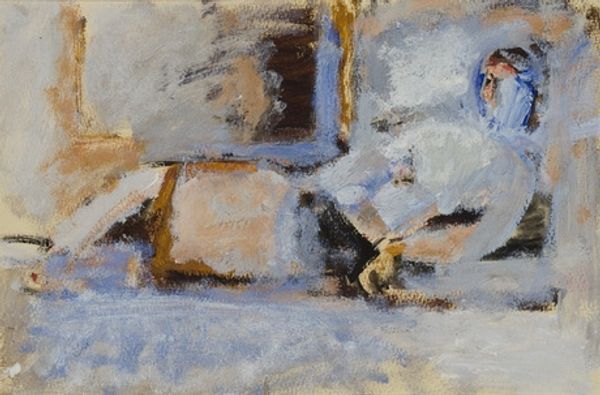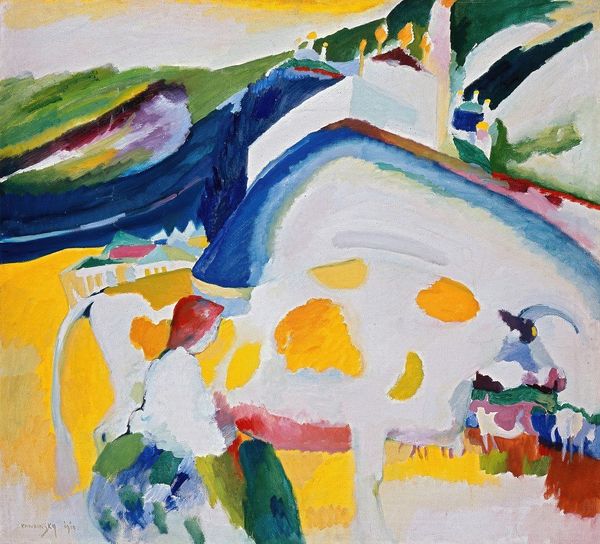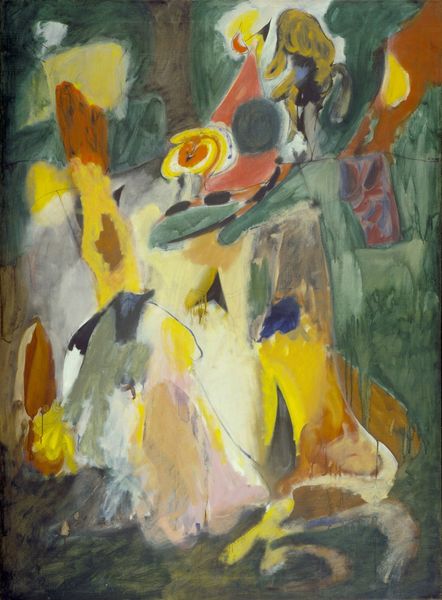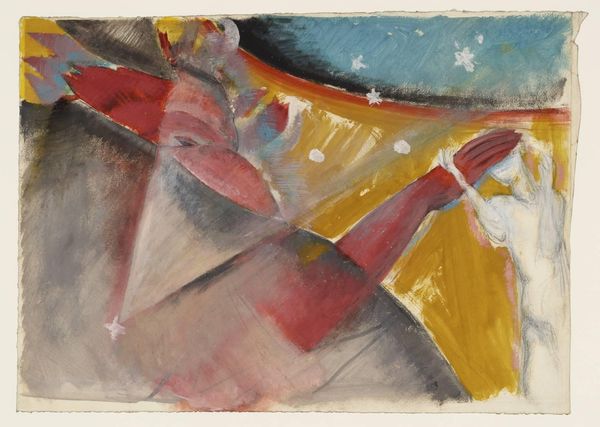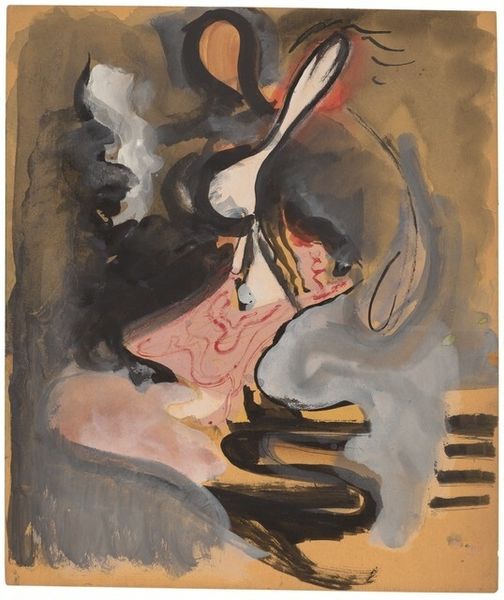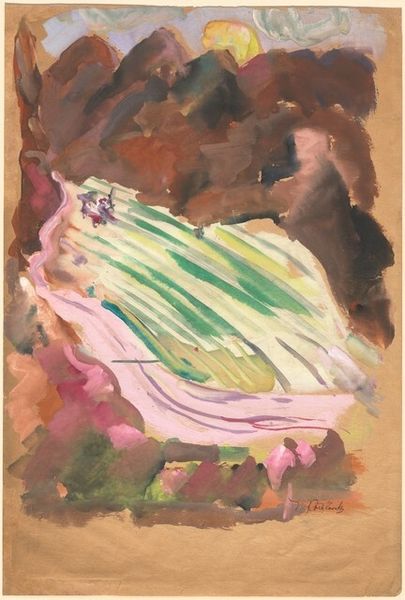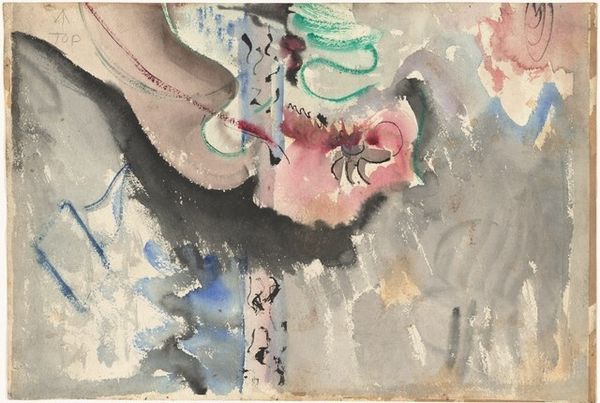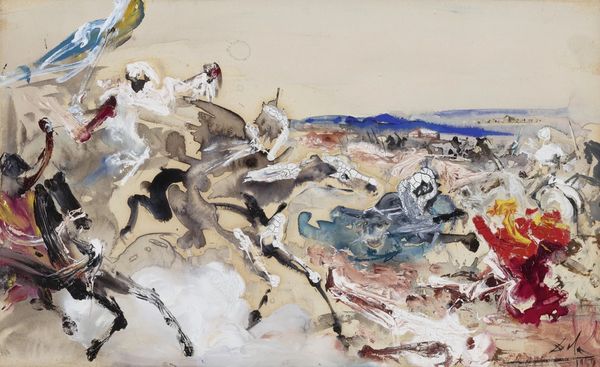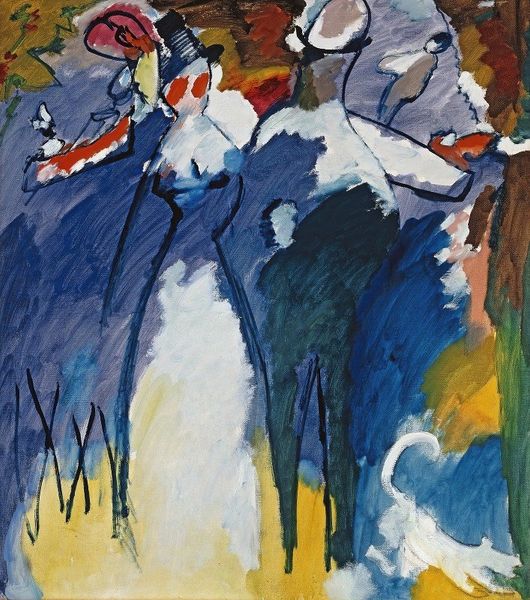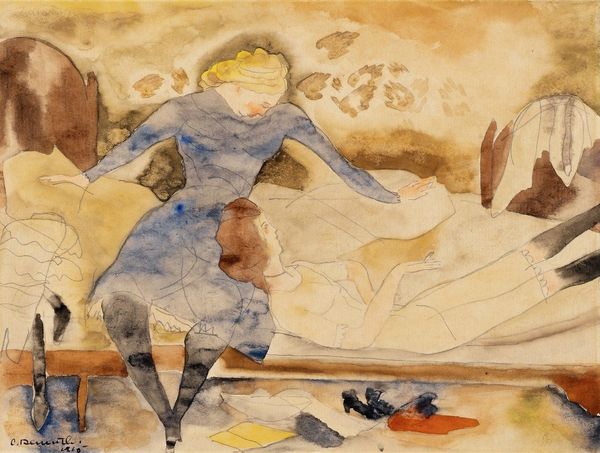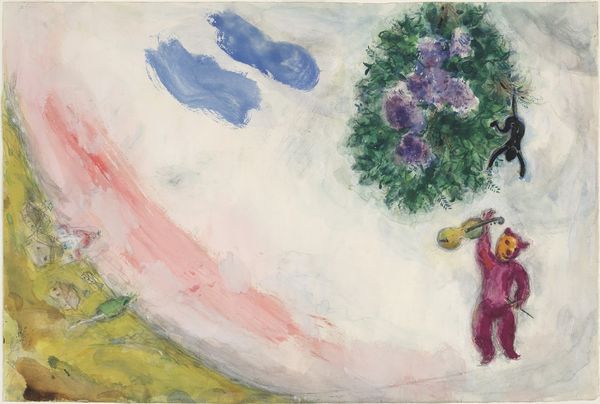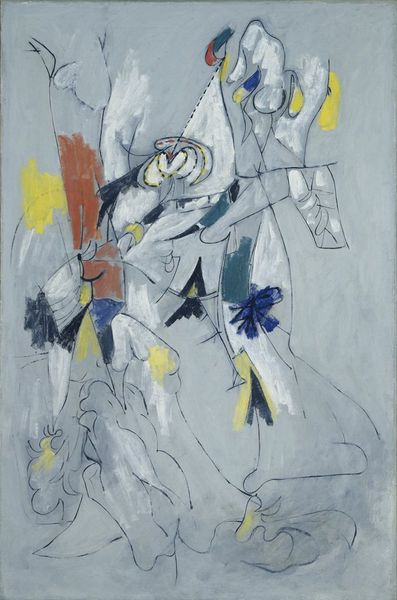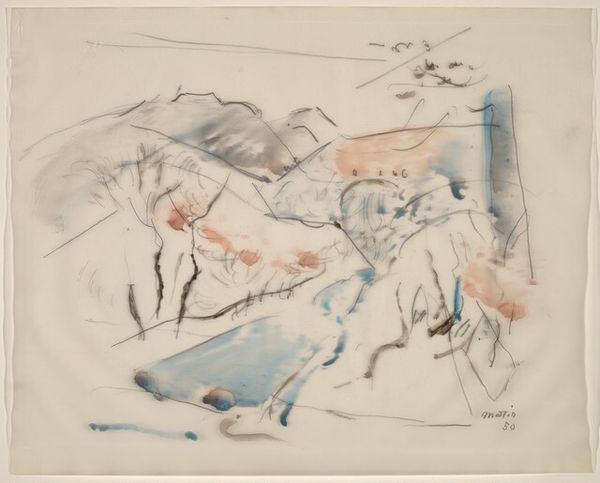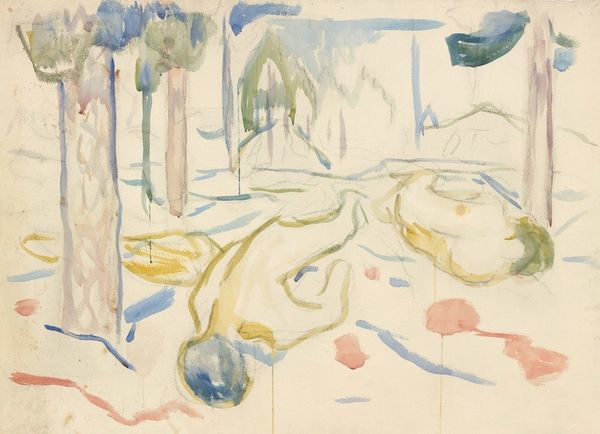
oil-paint
#
abstract painting
#
oil-paint
#
landscape
#
german-expressionism
#
impressionist landscape
#
oil painting
#
expressionism
#
expressionist
Copyright: Public Domain: Artvee
Wassily Kandinsky’s canvas, Murnau with Locomotive, presents us with a landscape dissolved into abstraction through colour and form. At first glance, the composition is a whirlwind of pastel hues. Shapes appear – a dark mass suggesting a mountain, patches of blue hinting at water or sky, and a linear form that could be a locomotive. Kandinsky, seeking a spiritual reality beyond the material world, employs colour not to imitate nature but to evoke emotion. The locomotive, a symbol of modernity, is integrated into the landscape, blurring the boundaries between the industrial and the natural. Kandinsky’s approach destabilizes traditional landscape painting, challenging viewers to see beyond representation. It invites us to engage with the artwork on a purely emotional and spiritual level. The dissolution of form into colour suggests a world in flux, reflective of the shifting perspectives of early 20th-century thought. The tension between representation and abstraction embodies a philosophical shift.
Comments
No comments
Be the first to comment and join the conversation on the ultimate creative platform.
